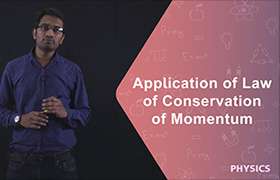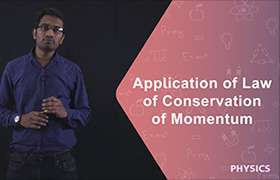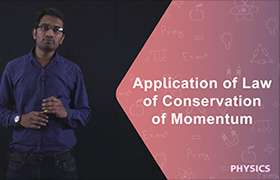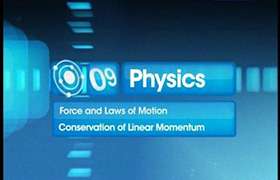CBSE Class 9 Answered
How can we derive newton's 1st law of motion with the 3rd law mathematically?
Asked by Arkajyoti Banerjee | 11 Oct, 2014, 12:58: AM
Newton's third law states that 'to every action there is an equal and opposite reaction". To put this mathematically, we have force FA exerted by one object on other and FB is the force exerted by second body on first. So, we have
FA = -FB ...... (1)
FA + FB = 0
ΣF = 0 ...... (2)
Hence, the net force on the object is zero. So, essentially the object will not move or if it is moving, there will be no change in its velocity.
Hence, equation (2) represents the mathematical representation of Newton's first law which states that 'an object remains in a state of rest or uniform motion unless acted upon by an external force".
Hence, we have derived 1st law from 3rd law.
Answered by Romal Bhansali | 12 Oct, 2014, 02:24: PM
Application Videos
Concept Videos
CBSE 9 - Physics
Asked by arushiarushi921 | 11 Oct, 2023, 08:45: PM
CBSE 9 - Physics
Asked by vomtimittagurupriya | 29 Sep, 2023, 05:52: PM
CBSE 9 - Physics
Asked by kunaljat51 | 24 Jul, 2022, 10:25: PM
CBSE 9 - Physics
Asked by komalpoonia636 | 16 Jun, 2022, 02:07: PM
CBSE 9 - Physics
Asked by avishisanghai | 20 Feb, 2022, 05:19: PM
CBSE 9 - Physics
Asked by charvi | 26 Nov, 2021, 06:27: PM
CBSE 9 - Physics
Asked by aanchishraddha | 16 Nov, 2021, 09:27: PM
CBSE 9 - Physics
Asked by nishitatrambadia | 21 Oct, 2021, 09:38: AM
CBSE 9 - Physics
Asked by anuragyvidya | 28 Sep, 2021, 12:47: PM
CBSE 9 - Physics
Asked by frusbJusyktsnis | 17 Sep, 2021, 12:03: AM













